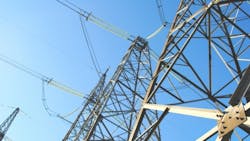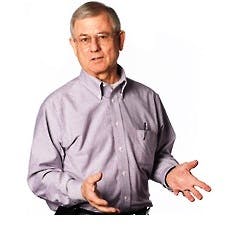U.S. Power Reliability: Are We Kidding Ourselves?
Our obsession with reliability indices (which, in my opinion, are misleading to the extreme) has diverted our attention from the bigger picture. Like many of you, I’ve also traveled overseas and seen different approaches to improving reliability. And I have a greater respect for the potential capabilities of the distribution system.
Several years ago, IEEE Spectrum had an article (U.S. Grid Gets Less Reliable) that looked at decreasing reliability. More recently, a study by credentialed researchers looked at the industry’s performance from generation to regulators. Some of their findings made me sit up straight in my chair.
For example: “The average U.S. customer loses power for 214 minutes per year. That compares to 70 in the United Kingdom, 53 in France, 29 in the Netherlands, 6 in Japan, and 2 minutes per year in Singapore. These outage durations tell only part of the story. In Japan, the average customer loses power once every 20 years. In the United States, it is once every 9 months, excluding hurricanes and other strong storms.
Despite decades of sober technical reports written by investigation teams in the aftermath of blackouts, the frequency of electric power outages in the United States is no less today than it was a quarter-century ago. Whether measured in terms of city-sized blackouts or smaller events, the statistics show that reliability has not improved. Indeed, if the data show any trend in the past few years, it is toward lower reliability.”
(Here’s another study with an intriguing graph from Saviva Research.)
In the past, we've always tried to fix reliability issues in the transmission system where we had more control and were willing to make the bigger financial and technology investments; the distribution system was more the neglected step child. But now the distribution/customer system, with growing DG, microgrids and automation/smart grid, is becoming the center of technical/financial/regulatory attention. Some folks are suggesting that we’ll soon have DSOs (distribution system operators).
What a hoot!
So,
1) Compared to other countries, are we really lacking in system reliability/quality.
2) Is the growing Distribution/Customer “Edge” the solution?
Here are some excerpts from our panel discussion.
Join in the fray by commenting below. And don’t ‘pull your punches’!
The discussion continues in February.
Difficult to Compare Reliability Levels
“All I know is that when I was on the EPRI board, I saw many of their studies that showed the U.S. system to be at least 99.99 percent reliable. The big question and goal for them was what we needed to do to move to 6 nines reliability.”– Matt Cardaro
Stepping back from this and considering the big picture, it is really difficult to compare reliability levels unless the systems being considered are very similar in almost all respects, including the severe weather conditions they may experience. Even in the U.S. alone it is almost impossible to compare utility reliability, especially when different systems use different assumptions. and record and tabulate their indices in different ways. In fact. a number of utilities in this country do not even report their reliability results to a central collection agency or industry group.
I have not studied the foreign data to any extent, but are all these countries measuring reliability in exactly the same way using the same assumptions? Just intuitively, I would probably say no. Are they looking at distribution failures or power plants going offline? How long an outage is considered an outage? In the U.S., most utilities only look at interruptions lasting over 4 to 5 minutes as outages. At what levels of storm intensity are outages either excluded or included in measuring reliability?
In contrasting U.S. reliability with that of foreign countries, are we really comparing apples to oranges? Are there just too many variables that must be considered to validly make the claim that U.S. electric reliability is inferior to that of other countries?
The smart grid segment of the industry has a promotional interest in manipulating or using the numbers to diminish the perceived reliability of the system to look poorer than it may actually be.
-Matt
Underground vs. Overhead
“I have so much confidence in statistical research developed by consulting firms, vendors and others that we created a new section for surveys we post that were provided by data mills and called it 'Lies and Statistics.' I might be cynical because of the 22 years I spent in research.”
After Superstorm Sandy, individual utilities in the Northeast are now investing billions of dollars per utility to upgrade their systems. This includes undergrounding, circuit hardening and surge protection. ConEd and PSEG are great examples.
When I talked with their executives, I came to understand that the cost to underground entire overhead systems is so immense that this solution is totally impractical. So when comparing densely populated areas in Europe with densely populated areas in the U.S., we are actually comparing overhead versus underground. I was reminded of this when I came across back lot distribution feeders in metropolitan Houston.
So, Paul, the data you showed was interesting though, because it showed that Australia with its large land mass and few customers had higher reliability than the U.S.
But my biggest takeaway is personal: I live in a neighborhood with underground service. I know I will be among the first back!
-Rick
Yes, Distribution Reliability Is Lower
Rick, you’re absolutely correct, of course. We had a prior discussion that discussed the asymmetrical comparison between European and North American distribution grids in terms of population density, topography, OH vs UG? And about Australia: could weather have something to do with it?
My reaction to Paul’s questions:
1) Yes, our distribution reliability is lower, mostly for a lot of good reasons. There has always been pressure to contain costs while designing for some challenging environments. You get what you pay for. (Why does the U.S. always need to be Number 1 in everything, anyway?)
You could ask the question: Have we overspent on generation/transmission while underspending on distribution? If you’re looking at increased SAIDI or some other index per dollar spent, maybe you get more from tree trimming than from spinning reserve… Still, a widespread outage due to lacking generation or transmission resources is more embarrassing, scary and impactful in other ways than a local outage confined behind a substation.
2) Yes, intelligent resources on the edge of the grid are the up-and-coming solution. Much more of the control and balancing functionality can now be accomplished with reasonably affordable devices at smaller scales, and dependence on network connectivity will be reduced. This means, though, that we are moving away from uniformity of power quality and reliability. Those who can afford it will have high-quality electricity on their microgrid, which will make it harder to justify investment in the “commons”… so this is a puzzle about social equity, and who should subsidize whom...
-Sascha
Different Consumer Perceptions
“Regarding the discrimination in investing in transmission vs. distribution, the reliability issues manifest in quite different perceptions to the consumer and society.”
Here’s a few quick reactions to Paul’s questions:
- There have been a number of drivers for the recent rise in rate of distribution infrastructure investment. At the heart of the matter, distribution investment is playing catch-up following a sustained declining rate of investment in T&D during the last couple of decades of the 20th century.
- Regarding the discrimination in investing in transmission vs. distribution, the reliability issues manifest in quite different perceptions to the consumer and society. In transmission it is usually about low probability events with huge consequences, similar to the crashing of a passenger jet airliner, which stirs up immediate and large reactions from consumers, consumer advocates and society in general in an aggregated fashion. In distribution it has been usually about high probability events each having small consequences per instance, similar to the crash of a personal aircraft, which gets little widespread attention from either consumers in aggregate, or consumer advocates.
- However, as Rick points out, recent large storms have become a huge driver for distribution investment. This investment behavior is somewhat of an anomaly in business as usual. There have been instances of widespread storm-caused outages many times in the past without the current strong responses to reduce such threats through investments and changes in practices to enhance infrastructure damage avoidance, increase service provisions during storms and enable faster recovery from what damage was unavoidable.
Why the anomaly in investing?
- Has the customer’s tolerance for outages declined, i.e., electrical service has become more important for reasons of financial, economic, security and convenience?
- Has the frequency of large storms increased to some threshold level, i.e., the straw that broke the camel’s back?
- Has the availability of new technology made such investments more effective and valuable, i.e., ready to admit there has been an elephant in the room because now something can be done about it?
- Is this particular reaction part of a greater tendency in US to take unprecedented (in recent memory) measures to reduce threats in total from climate, terrorists, crime, financial loss, cyber insecurity, epidemics, etc., either because the threats are greater or the perception is sharpened, i.e., the sky is falling?
- All the above, i.e., it’s complicated!
Whatever the motivations, big change is happening, and it seems to me to be doing so exponentially.
-Merwin
Access over Reliability
“There is a fundamental difference in character of the U.S. grid that follows from our geography and design philosophy. We have always prioritized access — universal, rural, and even remote access — over reliability. “
“Geography is destiny,” and when you have more forest land than other countries have land, it makes a difference. Relative population density and number of customers per mile also hugely skew the numbers. It would be better to compare metropolitan area to metropolitan area with equivalent population density, and even then we need to normalize to amount of power delivered and unit cost of energy. There are many different design solutions to the challenge of power delivery, and reliability is only one of several competing metrics that one might optimize for. Resources are finite. If we choose to optimize for reliability now, what are we willing to sacrifice? It also needs to be pointed out that changing one’s power source portfolio to make it more intermittent and unstable and less dispatchable is at odds with goals of increasing reliability. Load is already stochastic and always will be. Making generation stochastic is a grave error if we are seeking “five nines” of reliability.
Notice in the Saviva chart that the U.S. is compared to “Urban China.” That is a first clue. Why not all of China? Then consider the geography and populations of the other nations on the chart. Where are low population-density and heavily forested Canada, Russia, Switzerland, Sweden or Norway? Why would anyone selectively not show these?
It is probably not so much that the statistics are false, as that they compare apples to oranges. I believe it likely that the large US land mass, low US population density, and the large rural fraction of our grid are in disproportion with most of the “industrialized nations” surveyed, especially when including Alaska. We also rate and report ourselves against the standard of delivering 24-7-365 electricity to all our citizens, not rationed power hours to only selected urban populations. The US grid delivers an average of 1,570 watts per person compared to half that for Japan and 332 watts/person for China. We also have three extensive coastlines, with two exposed to annual hurricanes and the other to earthquakes. Unlike many nations of the world which were long ago largely deforested (e.g., U.K., Turkey, Singapore, the Middle East, etc.) we have 750 million acres of forest covering more than 30% of our land area (our forests are larger than 10 of the nations we are compared with on the Saviva chart), and thus have a large exposure to tree-fall and wildfire damage. We also are the only place on Earth that spawns tornados with regularity.
If we are looking for a gross metric to compare national grid performance, it should at least be normalized to quantity and cost, if not population density and geography. I would suggest it be annual system availability times total annual power delivered to all meters divided by total annual power revenues (including state subsidies) and divided by national population. You end up with per-capita kWh/$ deflated by system availability – a decent metric to represent the experience of the average citizen. Would love to see Brattle or CEER or Saviva or Galvin or IEA do that comparison. It’s a value metric, and value is what drives markets.
-Ike
Ike, I would expect that many Germans today would accept our reliability numbers if they could also pay our electricity prices. And the price of electricity is critical in the economy of a nation. Our reliability is typically higher in areas that require high reliability.
It is not a one reliability fits all.
That is the value in state-determined rates.
-Rick
Exactly. Politicians can be expected (but not forgiven) to oversimplify problems and focus on one dimension of an issue at the expense of all others. Engineers and scientists must not.
-Ike
The European Perspective
Mr. Bush, it is not that simple. German electricity costs have a number of components, one of which is DNO (distribution network operator) and TSO (transmission system operator) costs. These compare reasonably well with other EU countries, typically around 6 eurocents/kWhr. The rest of the costs are energy (around 8 eurcocents/Kwhr), which are much lower than, for example, the U.K.) and taxes which accounts for around another 14 to 16 eurocents. These numbers come from 2013 (Source: Eurostat). Most Germans would be happy to see lower taxes, but I do not think they would be happy saving a eurocent or two on an already quite low network cost of 6. (U.K. is around 4, France around 5, Netherlands around 6).
I certainly agree with the comment "It is not a one-reliability-fits-all"
-Mike
Discussion continues in Part 2...








